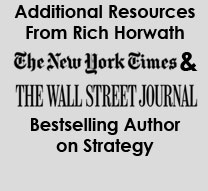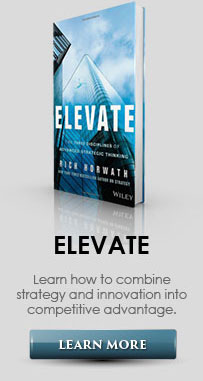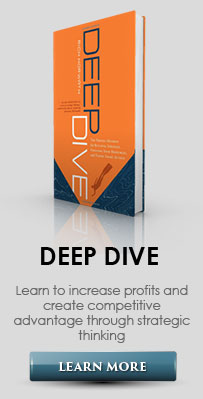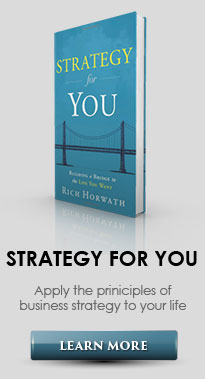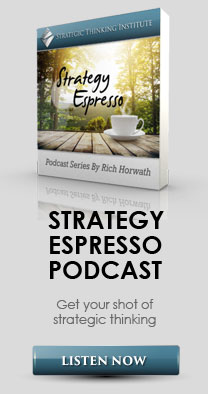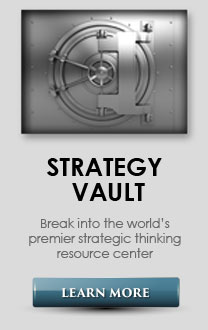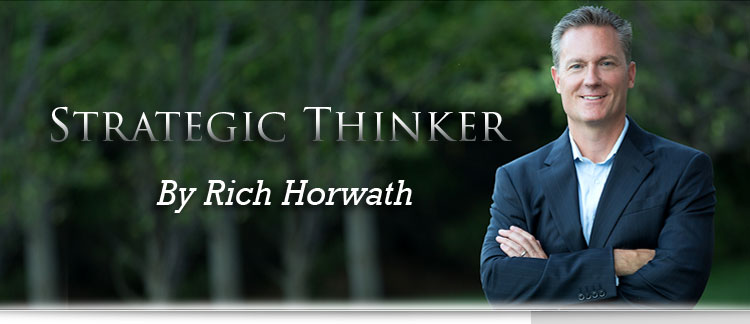
Sculpting StrategyI saw the angel in the marble and carved until I set him free. — Michelangelo I was recently invited to Venice, Italy to lead a strategic thinking workshop for executives from western Europe. Following the workshop, I ventured down to Florence, Italy and had the opportunity to visit the Accademia Gallery, home to perhaps the most famous of all sculptures, Michelangelo's David. After taking in this awe-inspiring work of art, I walked back down the hall to Michelangelo's other sculptures, the Four Prisoners. It was here that his unique approach to sculpting came shining through for me.
The modeling technique of sculpture is analogous to the classical school of strategy development where intense analysis of the industry and competitive landscape is used to form the strategy. Similarly, the carving technique of sculpture is comparable to the evolutionary school of strategy development, where strategy emerges from the marketplace environment. Michelangelo's sculpture and your business strategy share the common element of both starting out buried in their compositions. However, once intense analysis and the accompanying synthesis occur, they both begin to emerge with clarity and vision. Michelangelo's belief that the figure is embedded in the stone, requiring vision and skill to draw it forth, teaches us a valuable business premise: Your business strategy lies embedded in the form that encompasses your customers, competition, company offerings and marketplace opportunities. What is required of you is the strategic thinking necessary to free your strategy. The process of developing strategy is quite similar to the process that a sculptor uses to create a work of art. Therefore, we can describe the five phases of the best-of-breed strategy development process in concert with the five phases of sculpting. I. Discovery: "Choosing the Tools"A sculptor begins the process by selecting the material to work with (clay, marble, metal) and the appropriate tools (hammer, chisel, knives) with which to work. Similarly, the discovery phase of strategy development involves the selection of the people, process, and information to be used. The discovery phase entails the designation of the strategy development team, an outline of the process being used, and pre-work. The pre-work involves intelligence gathering on the market, customers, competitors, and the organization, including primary research with customers and employees in the form of one-to-one interviews, focus groups and the Strategy Survey. II. Strategic Thinking: "Playing in Space"Once a sculptor has chosen the tools, she begins working ideas out in space by creating a maquette, or small 3-D model of the intended work. The strategic thinking phase provides the forum for the group to begin generating and capturing their business insights in model format. The strategic thinking sessions, conducted with the strategy development team, are designed to generate new insights through a methodical and comprehensive examination of the four key areas of the business: market, customers, competitors and company. The main reason so many strategic plans collect dust and are not actively used to drive daily activities is because they don't contain any new thinking. The management team fails to invest time generating the strategic insights which are the key to new growth. After all, new growth comes from new thinking. III. Strategic Planning: "Building the Framework"After creating the miniature 3-D model, the sculptor working in clay creates a skeletal structure or wire frame, known as an armature, to serve as the foundation of the sculpture. The strategic planning phase acts in the same manner, creating the framework for the strategy and all of its elements. The strategic planning phase transforms the insights generated from strategic thinking into the strategic action plan (StrategyPrint®) that achieves the organization's goals and objectives and includes the appropriate timelines and budgets. The key is that the deliverable is a concise 1-2 page StrategyPrint, or blueprint for the business. IV. Strategy Rollout: "Sculpting the Masterpiece"Once the framework has been developed, the artist sculpts the figure, adding and taking away material as necessary. In the same way, the strategy rollout phase transforms the strategic plan into the activities and offerings that move the business forward. The strategy rollout phase ensures that the key elements of the strategic action plan are clearly communicated throughout the organization and that an implementation plan is in place. The following steps support the strategy rollout:
V. Strategy Tune-up: "Polishing the Form"Once the sculptor finishes the work, she must ensure that adjustments, such as proper lighting, and maintenance activities, including cleaning and polishing, are performed on a regular basis to keep the sculpture in its best form. Similarly, the strategy tune-up phase serves to keep the strategy in its best form or evergreen. Comprised of a half- to full-day session on a quarterly basis, the strategy tune-up consists of periodic formal reviews of the business by the strategy development team to hone their work. The team methodically reviews the four key areas of the business—market, customers, competitors and company—to identify changes and make any necessary adjustments to strategy and tactics. Great strategy, like great works of art, requires vision, creativity, and hard work. Are you and your team bringing each of these elements to your business? If not, your success may stay buried in mounds of irrelevant activities, like The Atlas struggling to free his potential. |
||||
